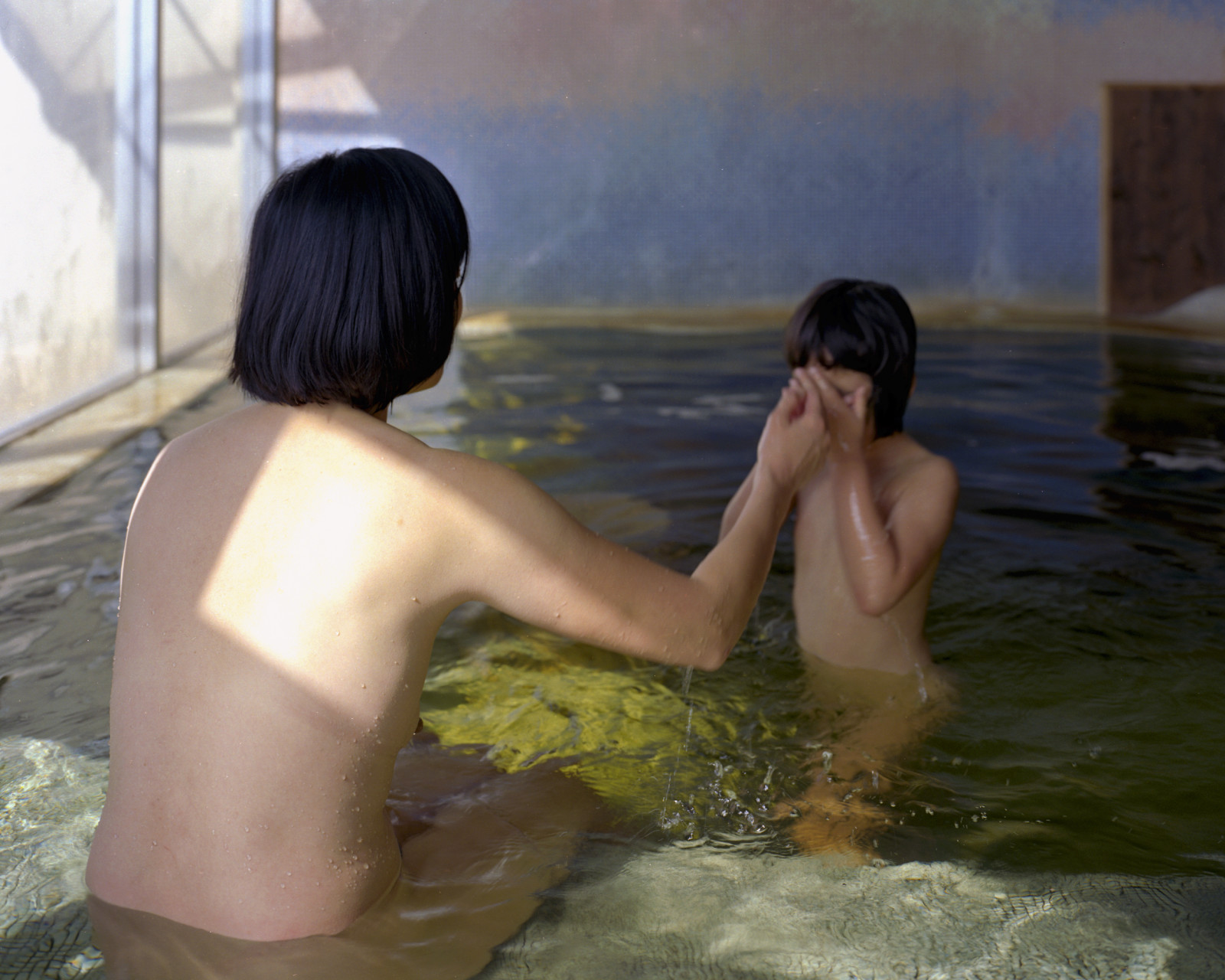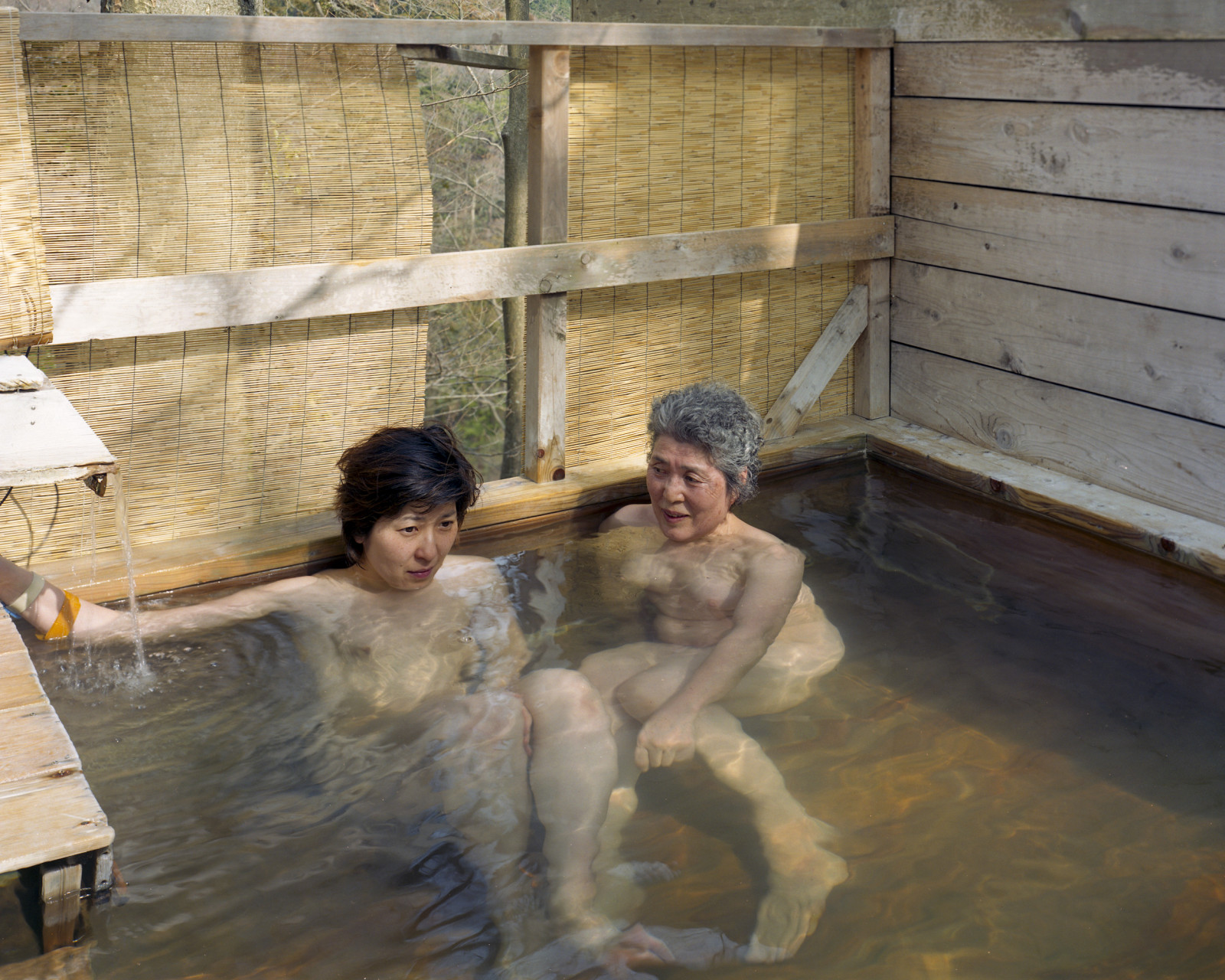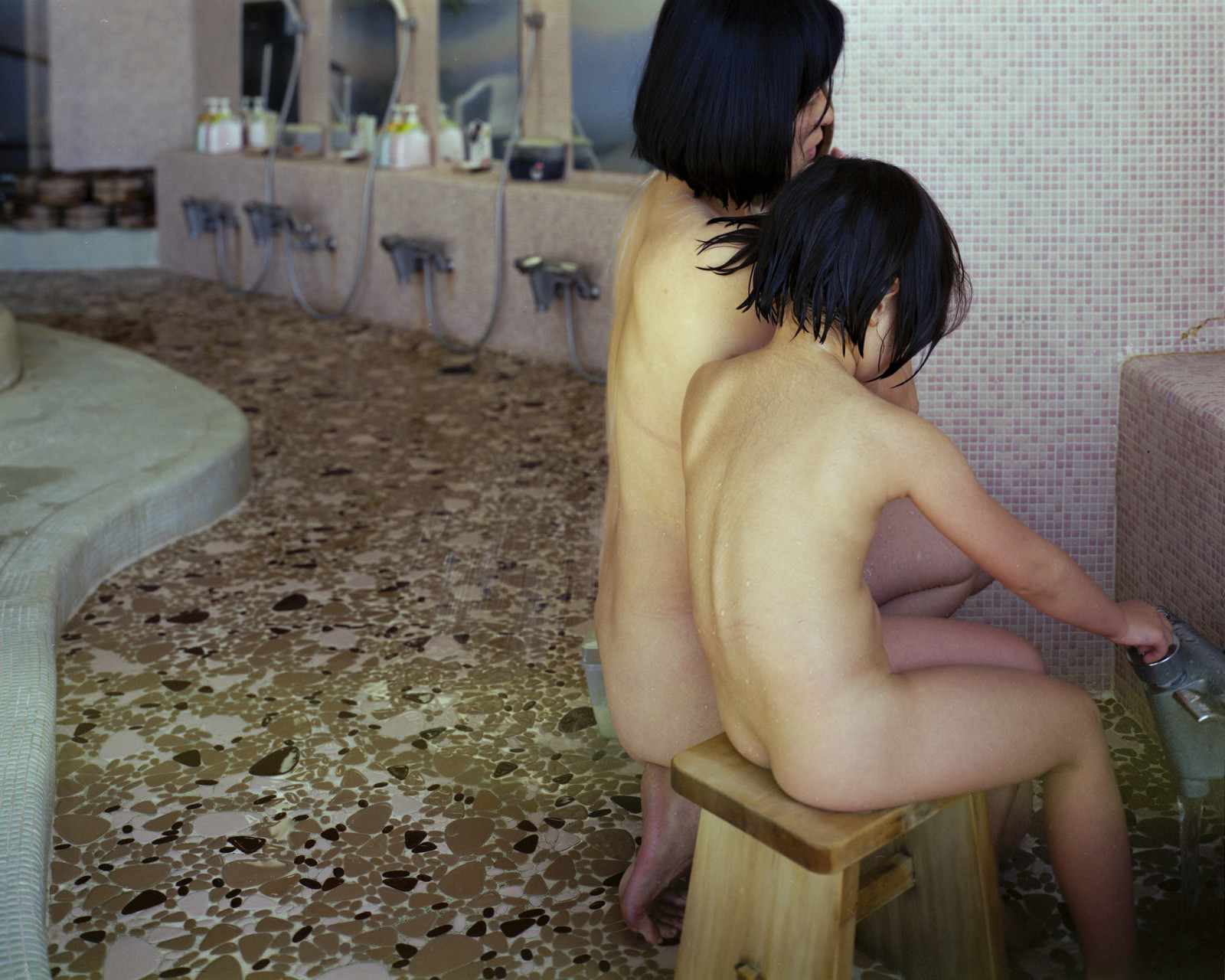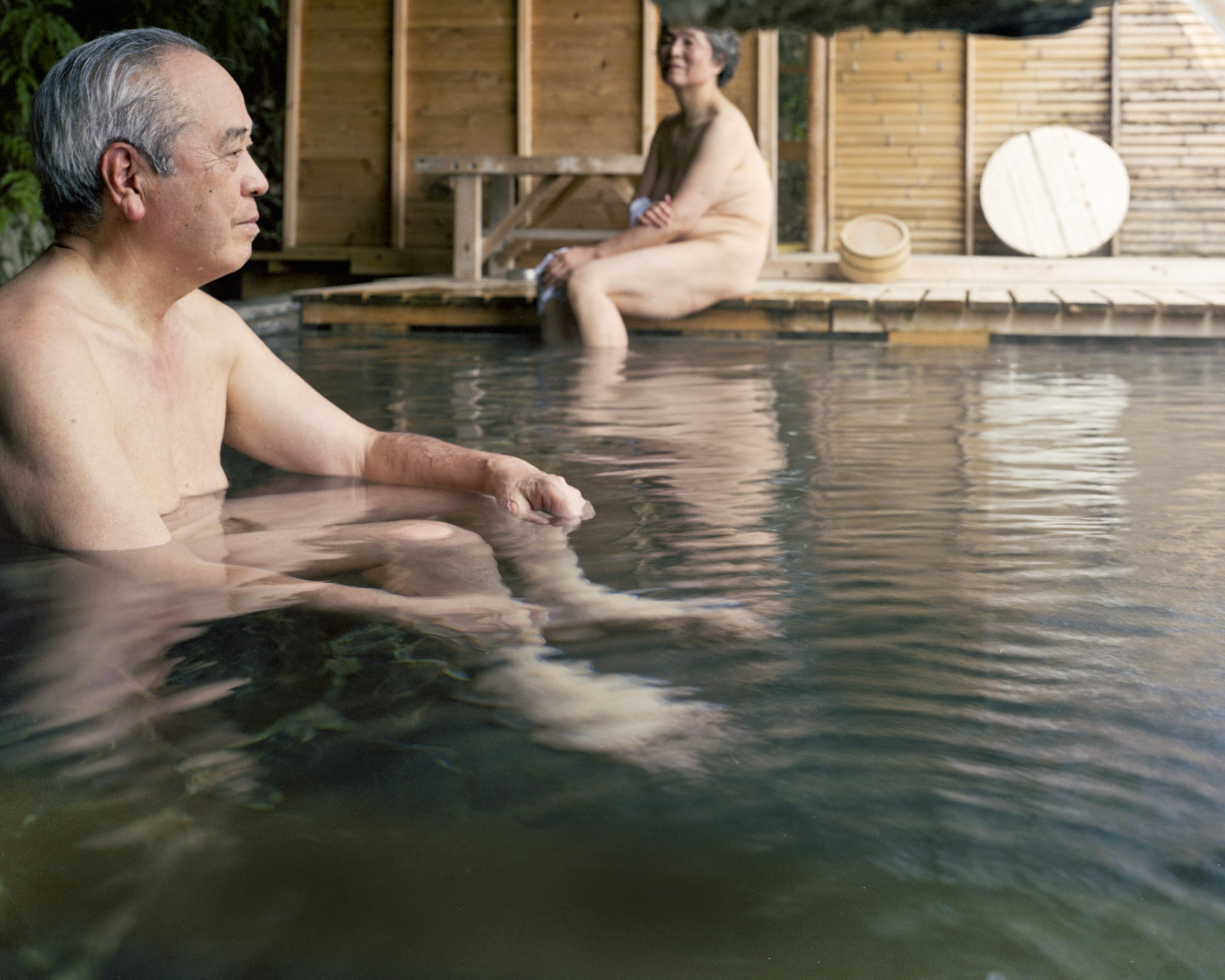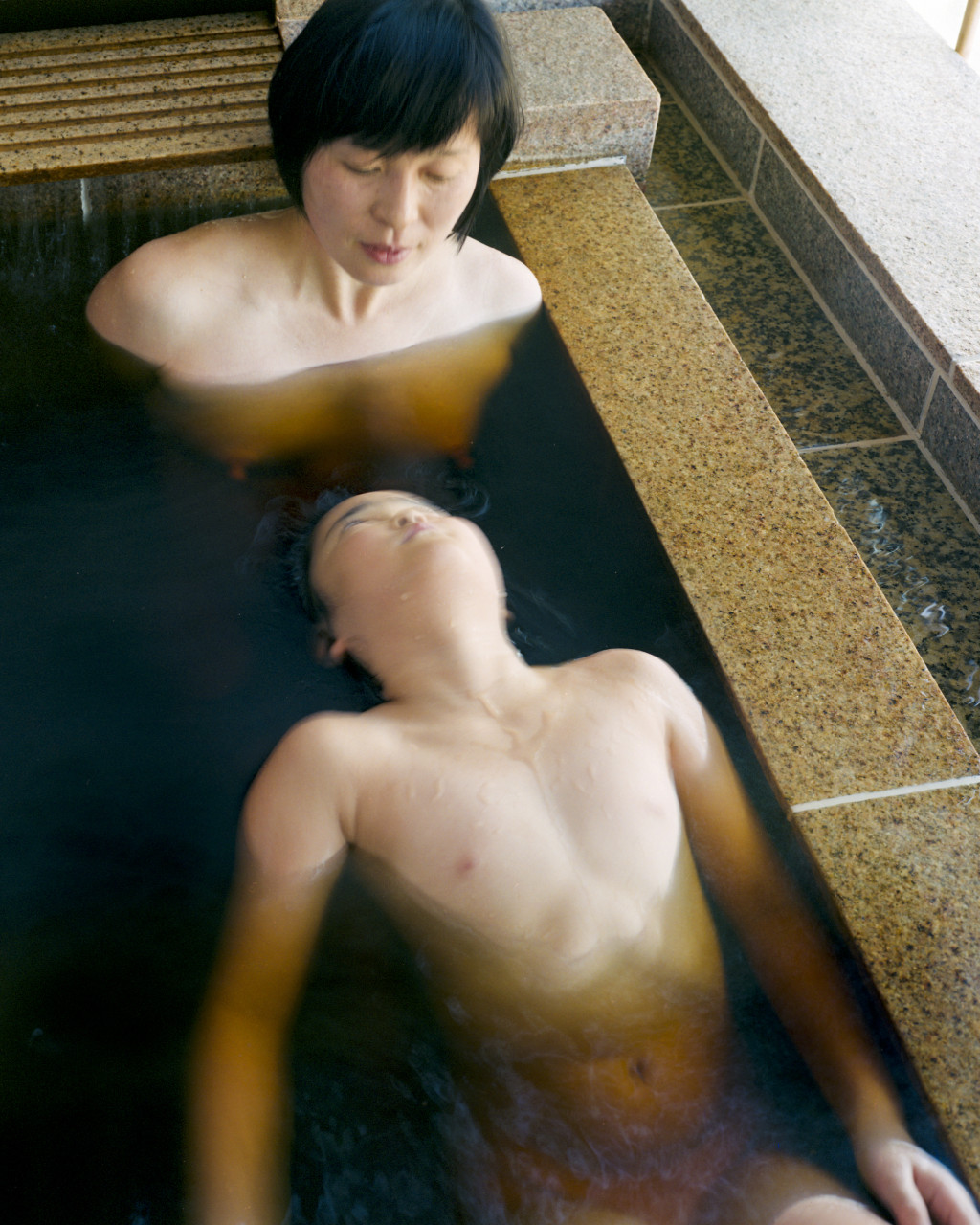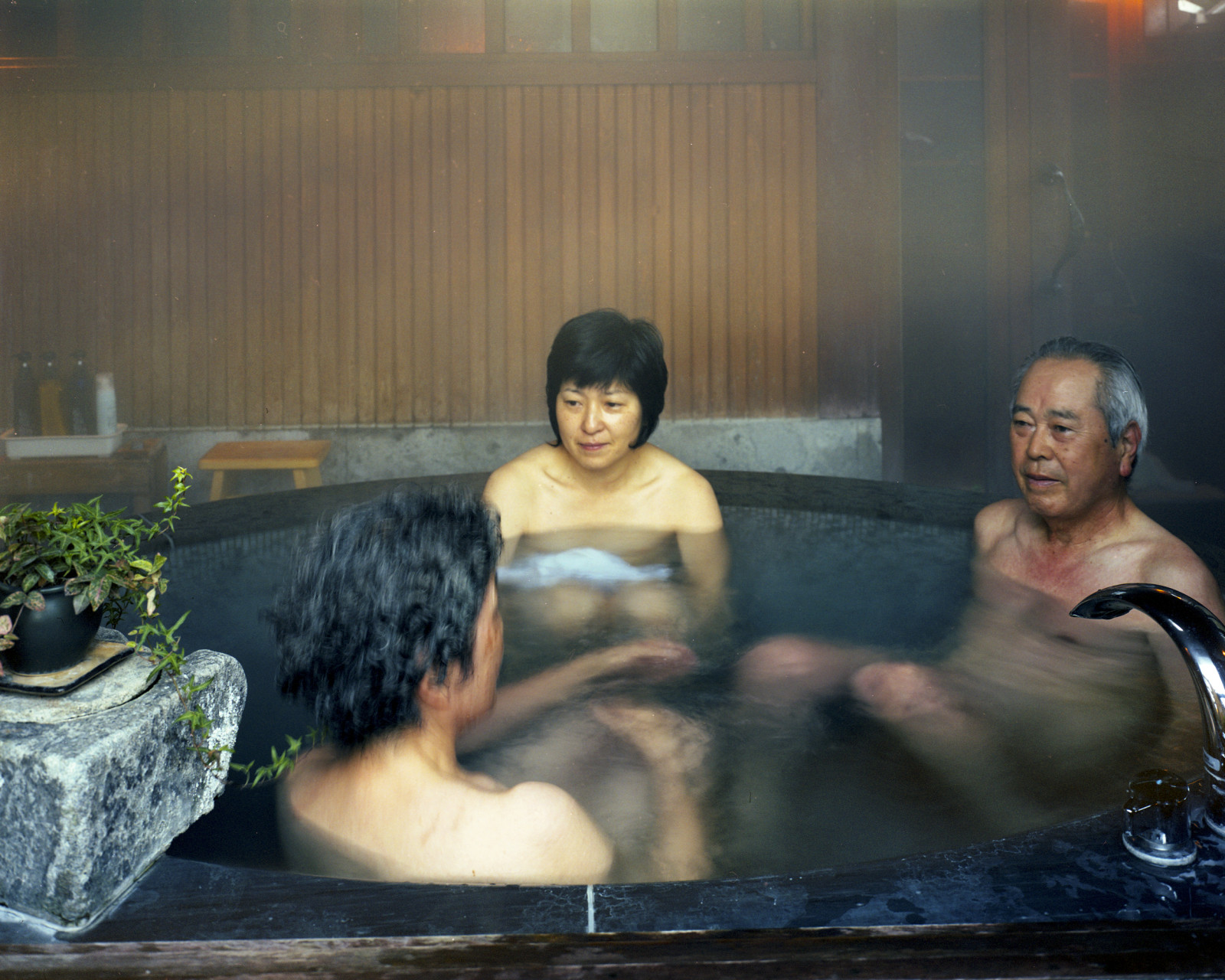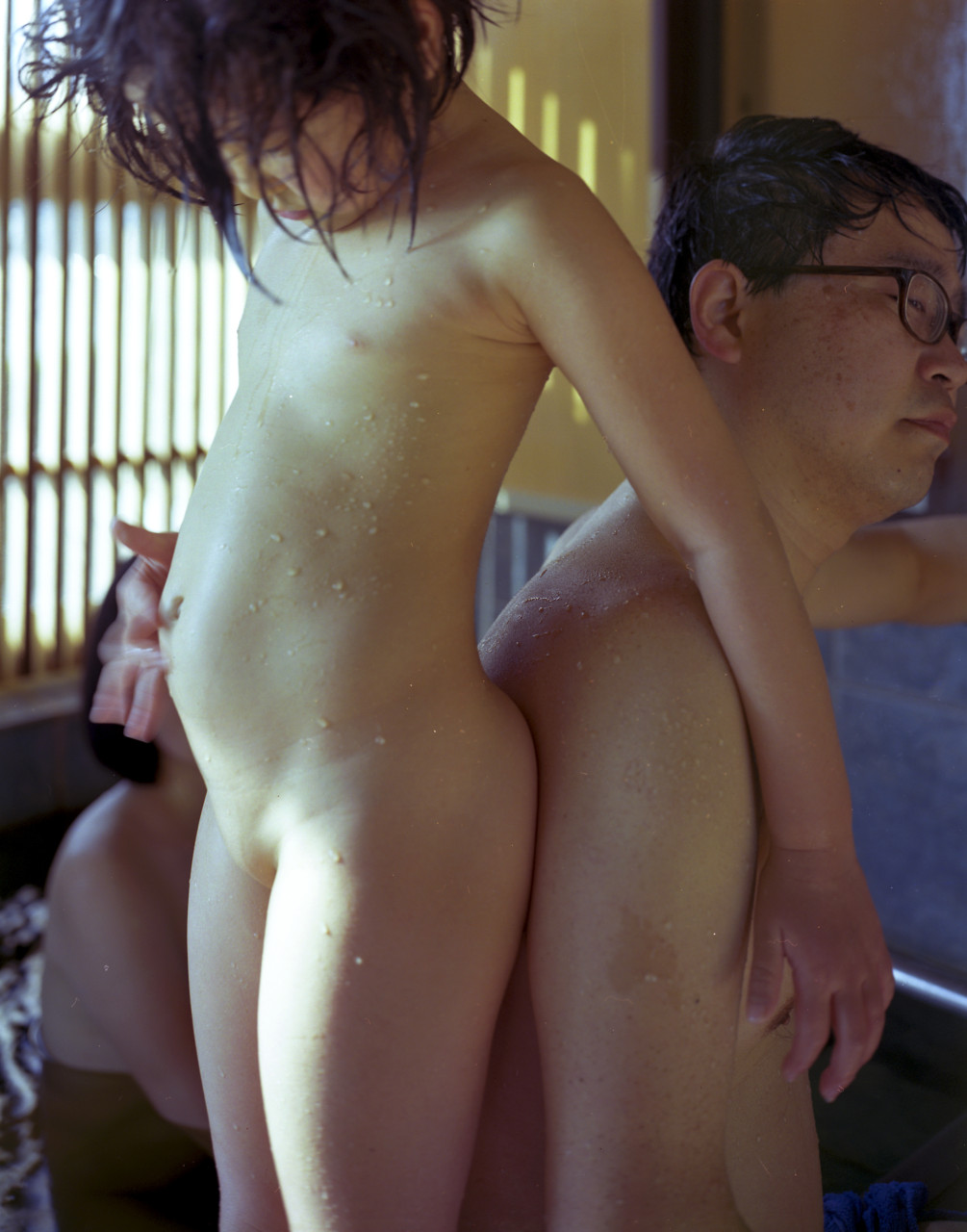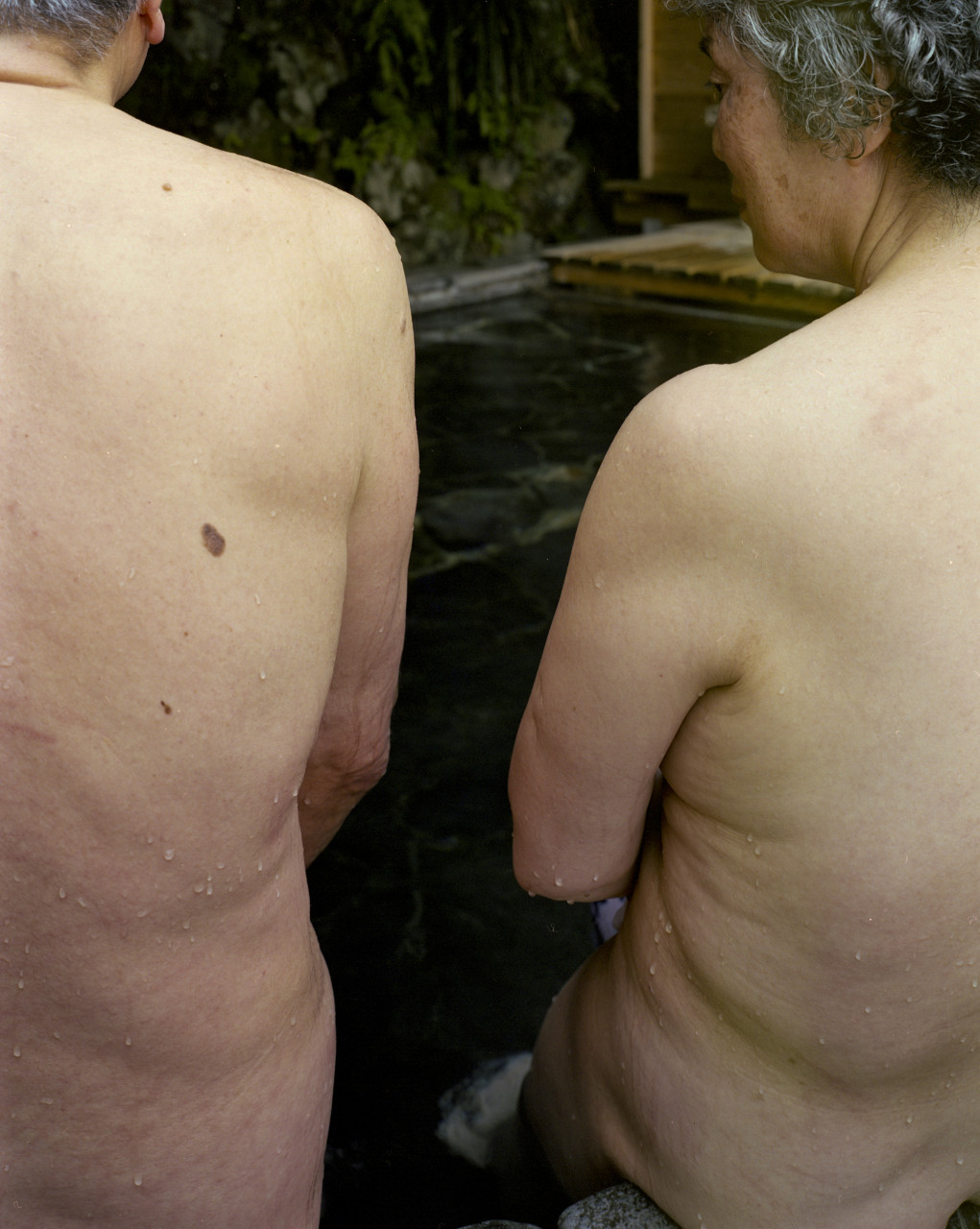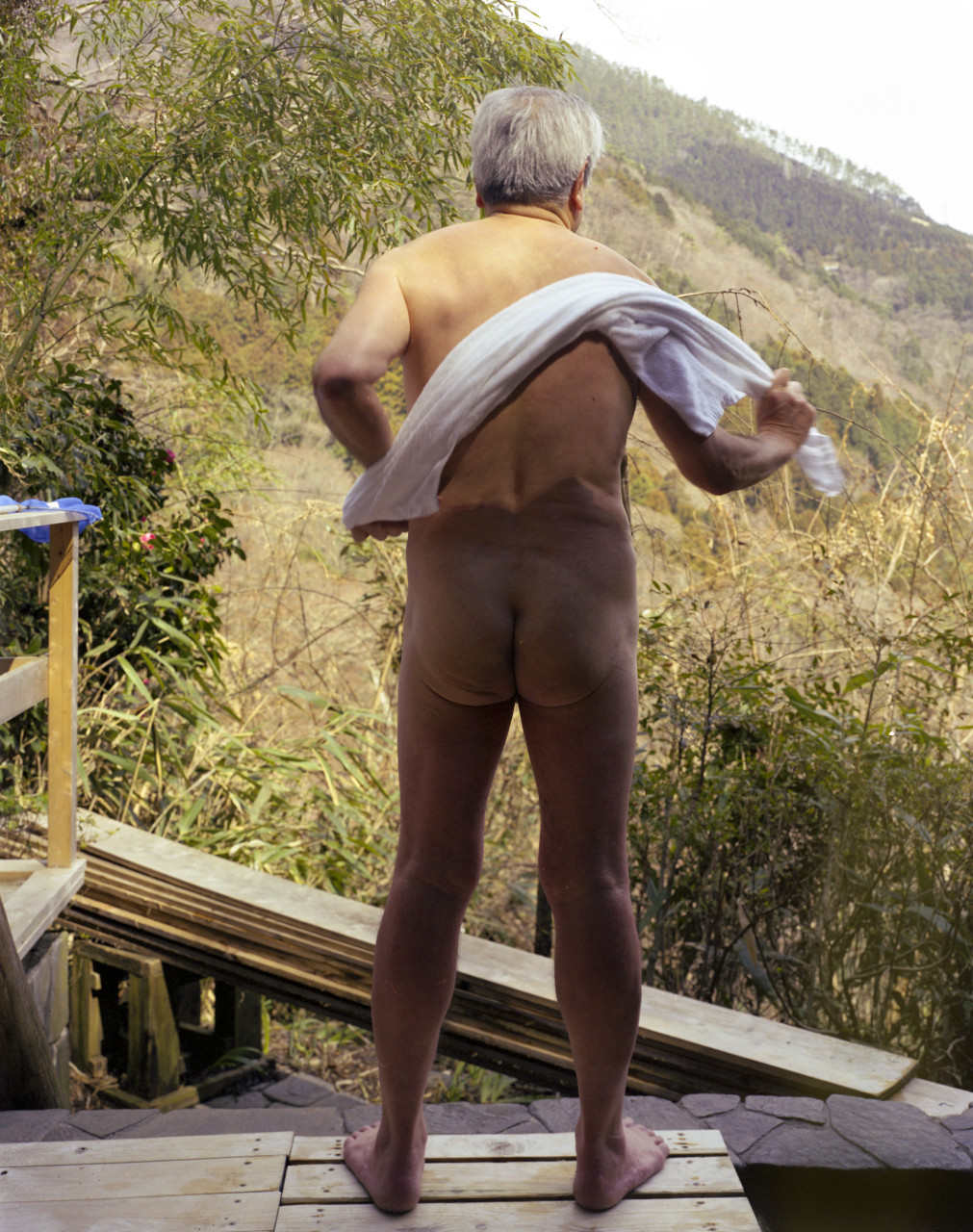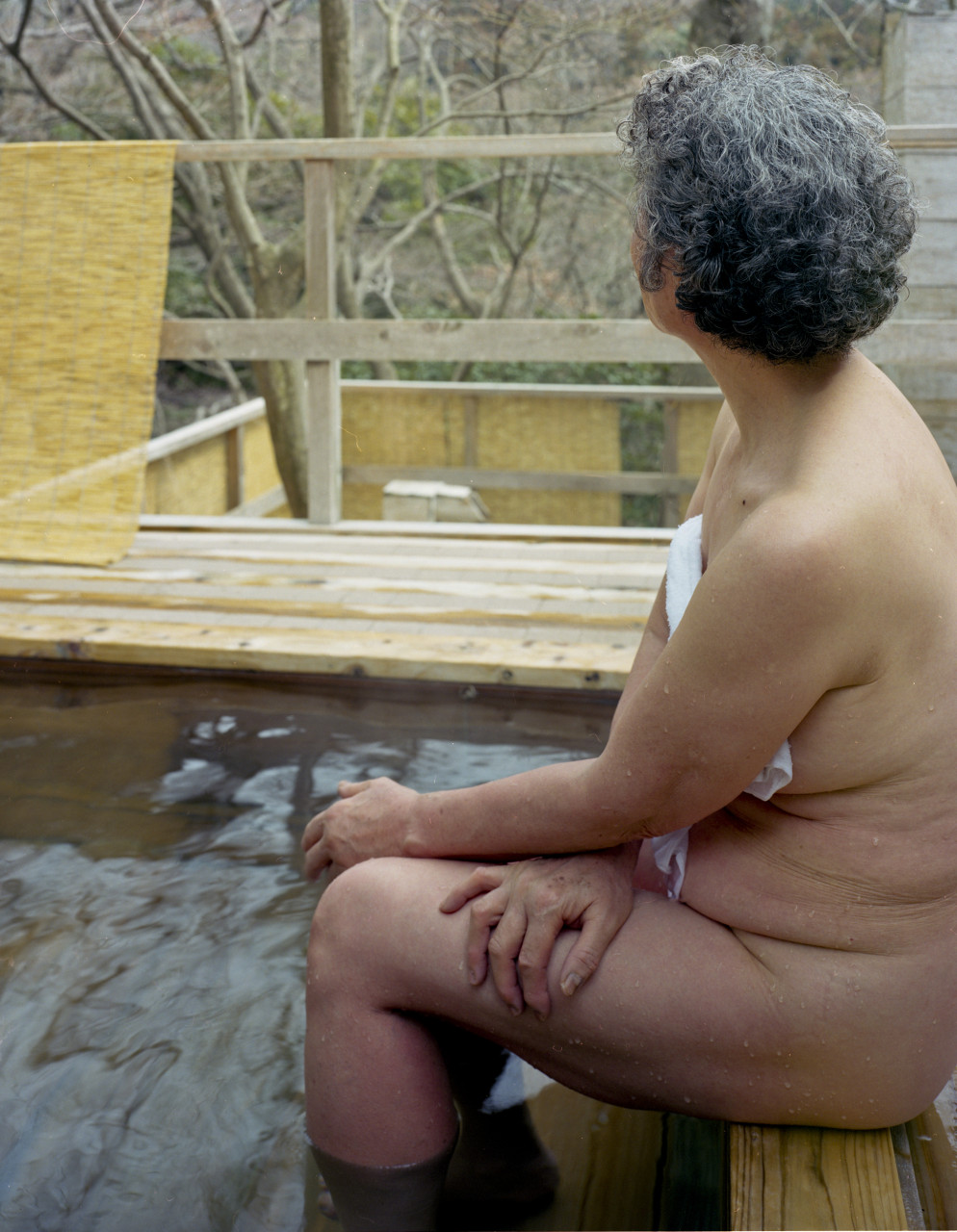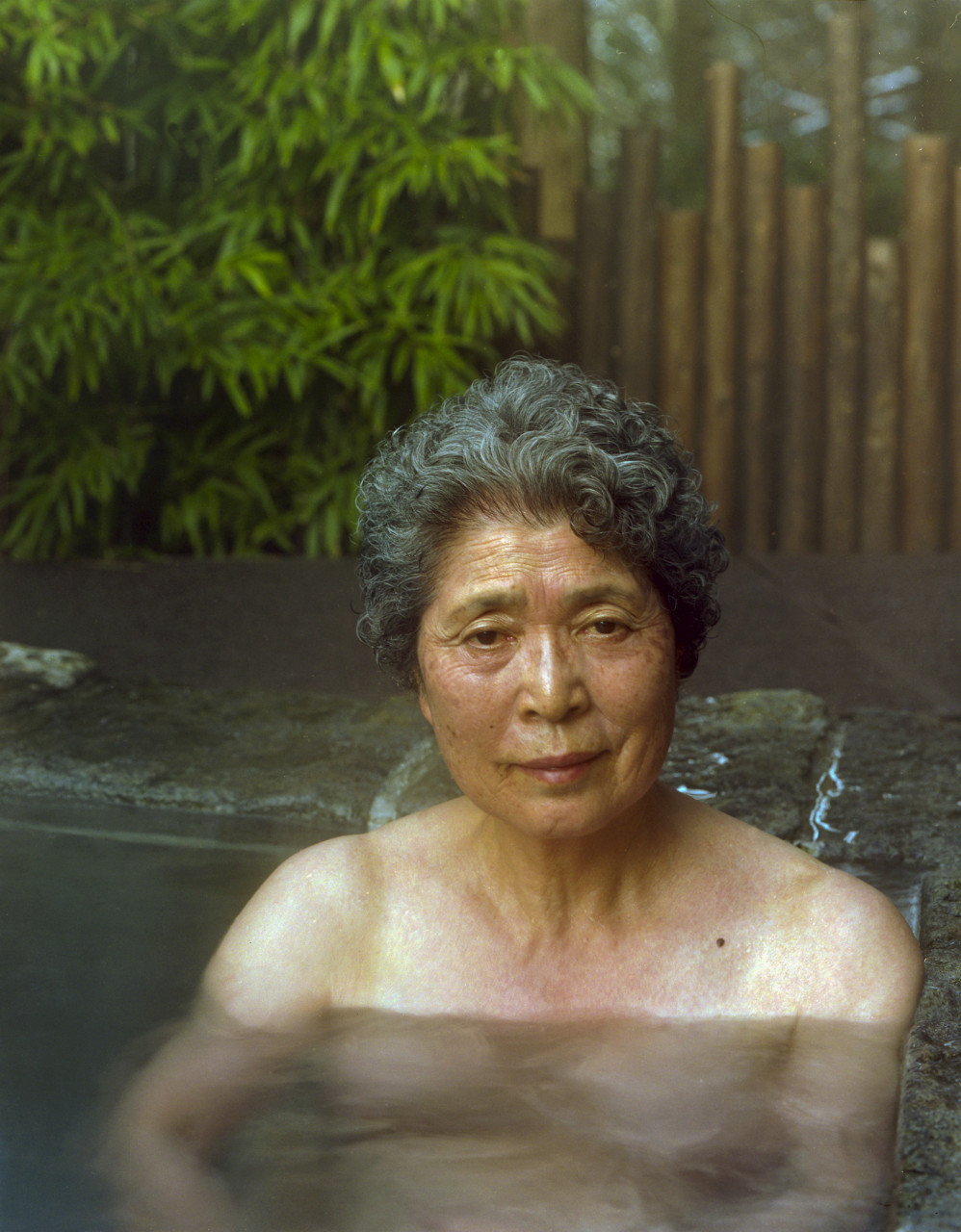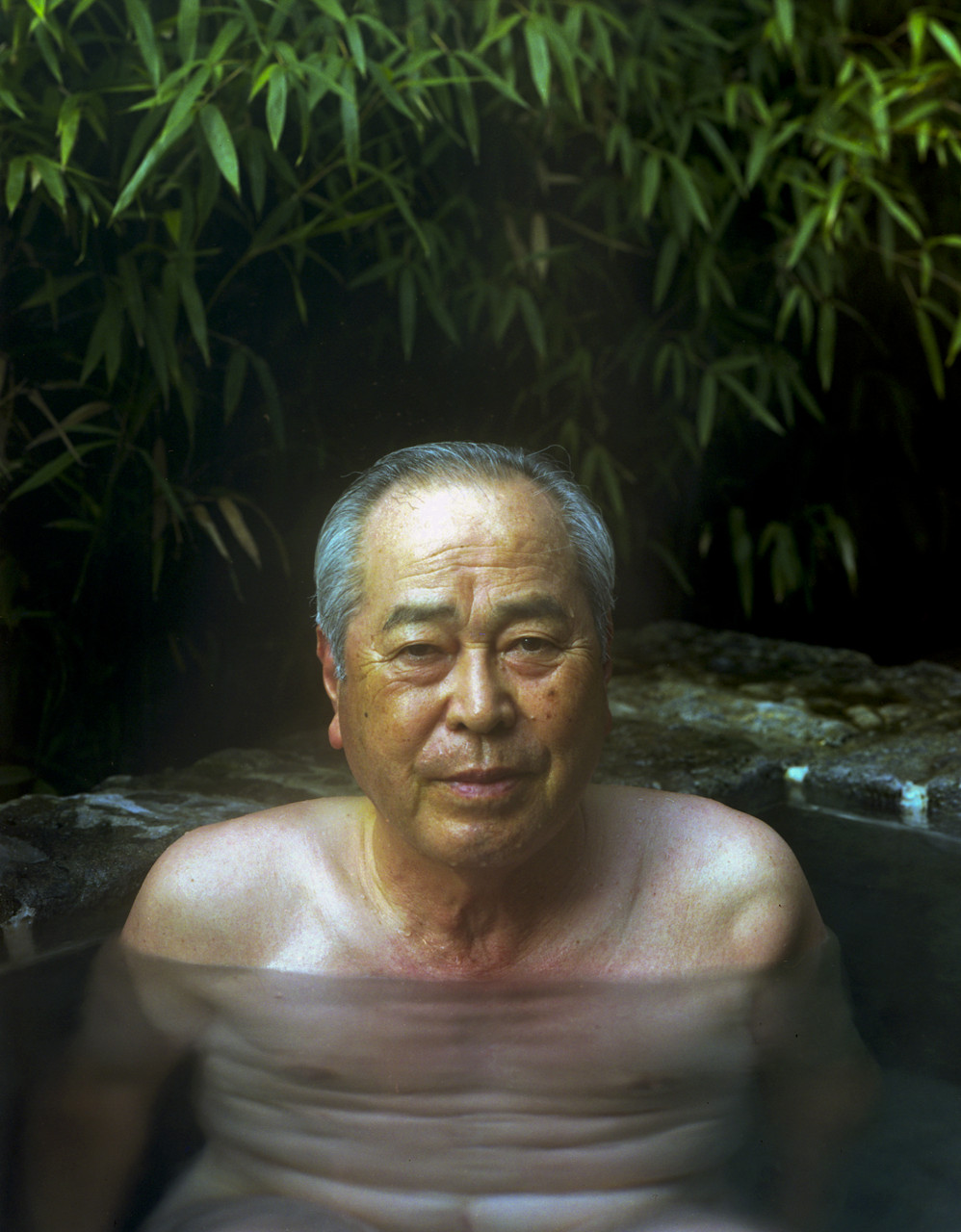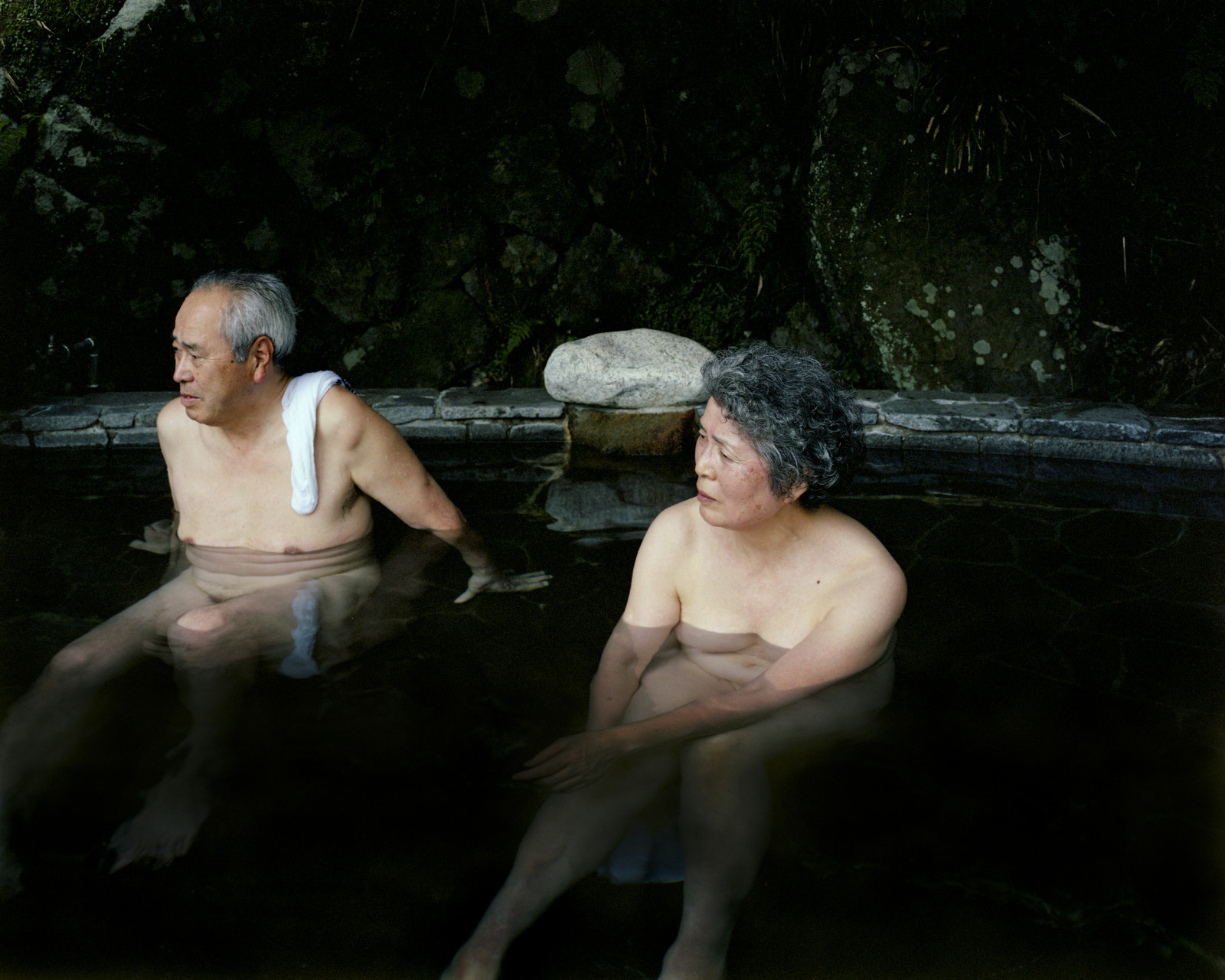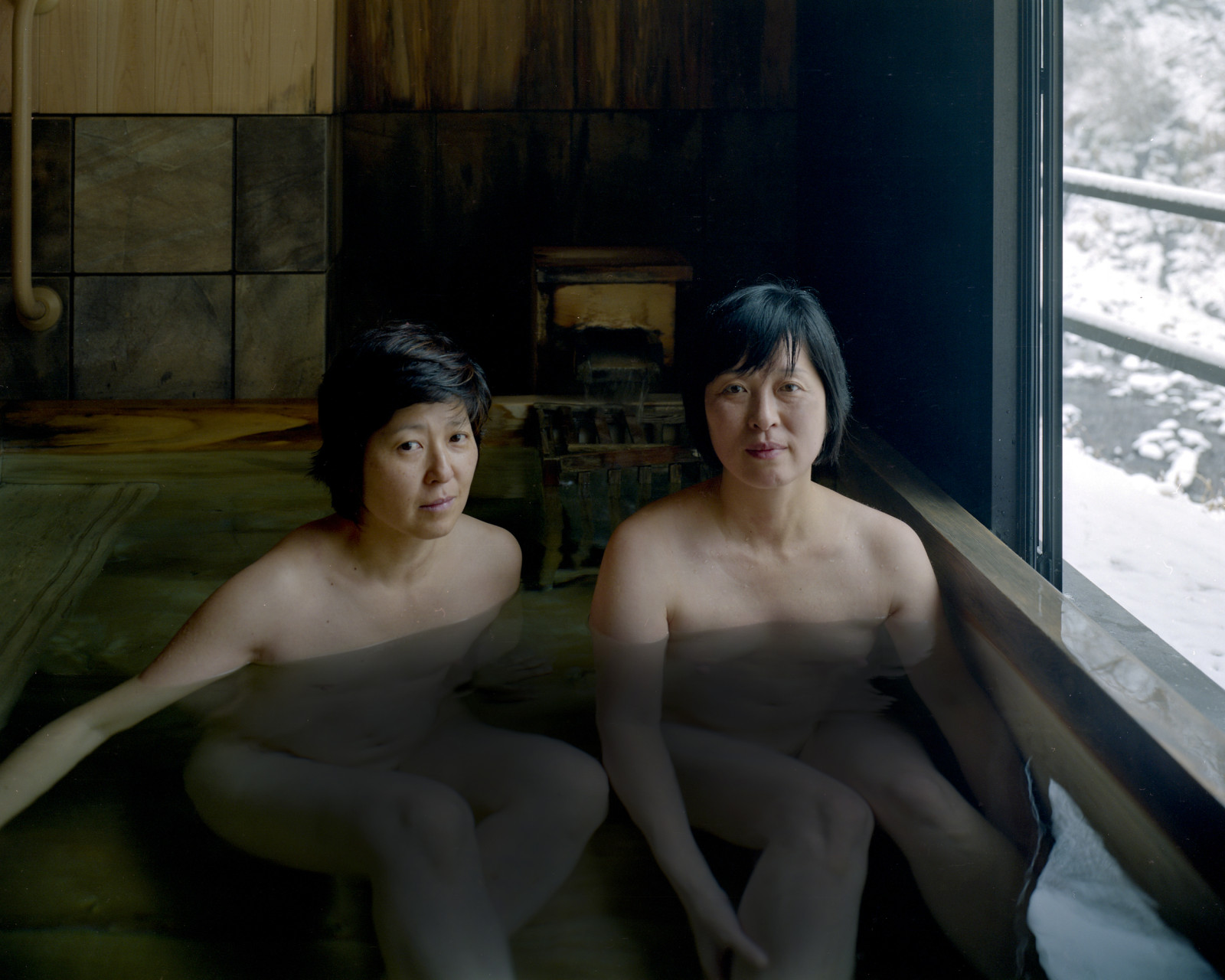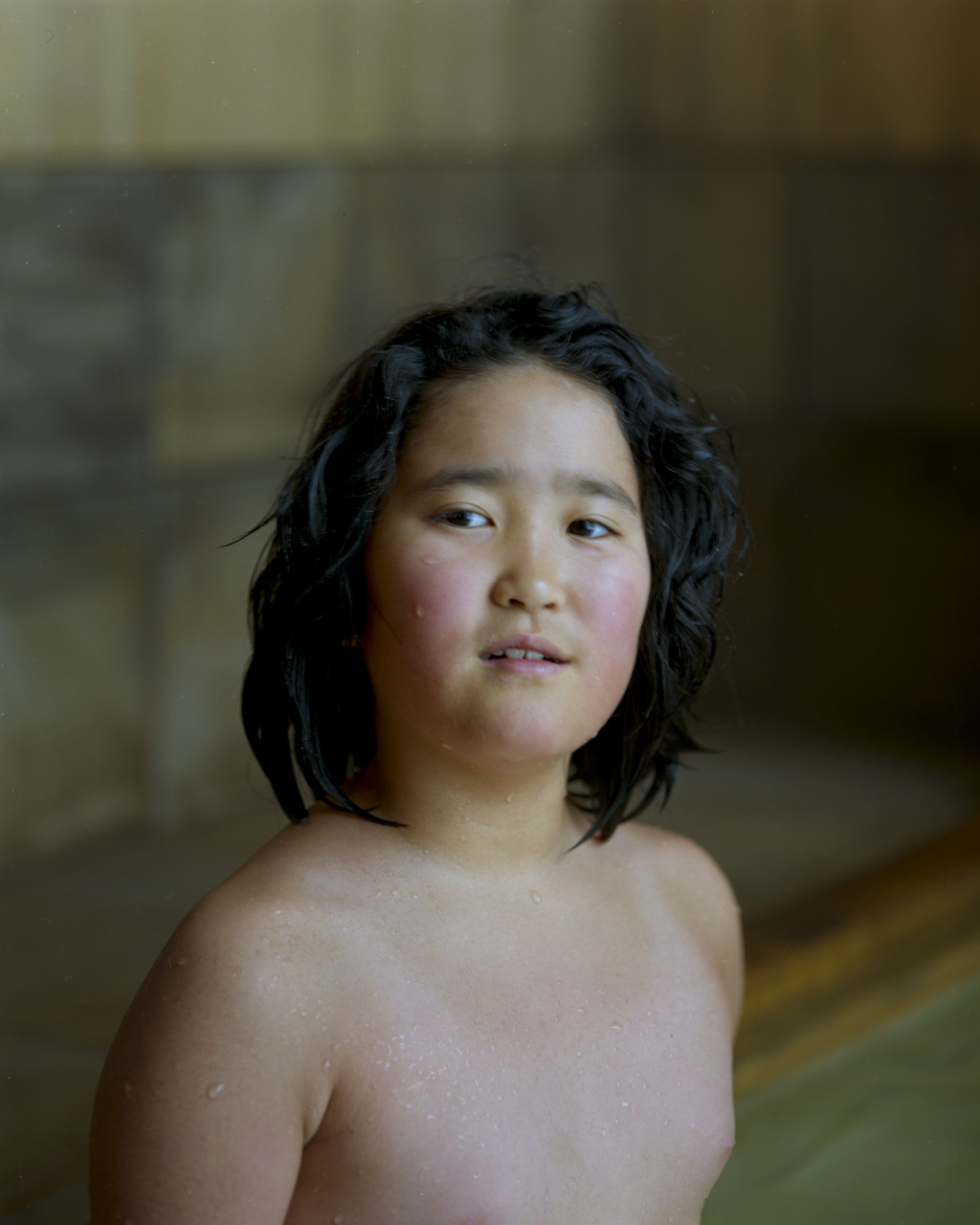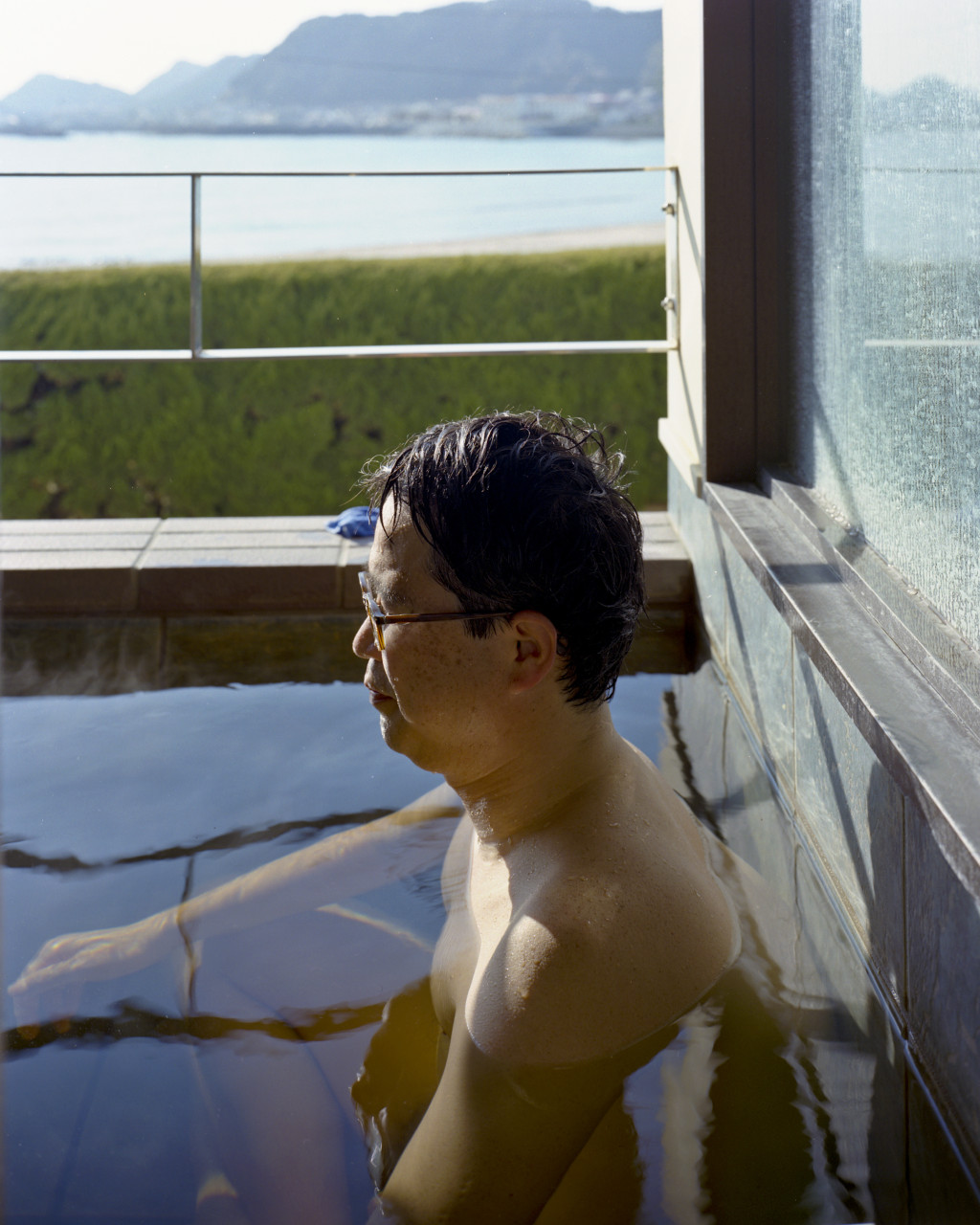Sentimental Education, 2005 – 2008
Photograph as Hope: an essay by Toshio Ishii
- Toshio Ishii
-
Associate professor
-
Department of Literature, Keio University
-
11/4/2005
It is a mysterious photograph. Each viewing yields a different impression.
The setting of the bathtub lends itself to an impression of a Japanese painting. Then the sunbeam renders the woman’s back like a marble statue. When I focus on the figures, it is as if I am looking at a painting of two nudes by Renoir.
The entire image is on a plane where two people merge while being encompassed by the air that fills the bathtub. In this case, it is the woman’s lacquer black hair that seems to act as the core to this composition of a Japanese painting.
Then, the transparent feeling of hot water in which they are bathing goes around the entire bathroom through the sunbeam, which slants into the space and gives solidity to the woman’s body. Her body occupies nearly half of the space, as if it is a statue constructed for this environment.
Finally, a sensual painting starts from the redness of the infant’s body which warms the whiteness of the woman’s back. The infant, looking like a little wet animal, like a frog, is a reminder of the vulnerable life within the sturdy body of the mother.
These impressions change before one becomes aware. They cross each other momentarily without colliding or getting muddled. When a certain impression begins to occupy, the other impression steps back. They take turns as if a reversing figure. However, there is not a sense of abruptness or serious consideration – is it that or this? – when the figure reverses. This is a sign of richness.
I have seen this artist’s work for years and to find this flower from a rich harvest is a surprise. Many say that all essences of an artist can be seen in the maiden work. In Hiroyo’s work, the various worlds comprised in the earlier work obstructed each other to the point of being unclear. Since the essence was hard to ascertain, it was a sign of weakness. However, this weakness has evolved into a genuine strength.
My specialty is philosophy. The philosopher tries to understand the world with logic as the main weapon. The simpler the logic is, the sharper it cuts through our world and the deeper it reaches. It seems that the philosopher is a kind who pursues depth above all. This might be why depth and richness do not often coexist in philosophy–profundity often looks penniless. It is not hard to see a strength turn out to be a weakness. But to one who dreams of the philosophy, or even life, where the abandonment of a sharp logic is transformed from a weakness to a strength, this photograph appears as a vision of hope.
I strongly wish for this artist’s recent work to be widely open to the public in Japan where we have hardly heard the term “hope” for years.
More than any other year that I have been judging contemporary photography competitions, there’s a welcome rise in the number of nominated photographers engaging with our big social and political issues, looking out in to the world for the stories of who and what we are…
Because I took my time, and returned throughout the past three weeks to the photographers and bodies of work that I felt were the strongest, I hope my choices for the prize and finalists are not governed by the novelty of seeing a body of work for the first time or dependent on my mood on a particular day! Instead, I gradually selected down to the projects where I felt the photographer had meaningfully investigated their subjects, created successful and enduring balances between their concept and the real experience of their chosen subjects.
I have chosen Hiroyo Kaneko as the recipient of the Santa Fe Prize for Photography because, for me, the work and her artist’s statement really intrigued me, perhaps even confused me at first. It is often the case for me that the first time I experience an enduring photographic project, it doesn’t entirely reveal itself to me. I kept returning to Hiroyo Kaneko’s images of her family bathing in hot tubs. I had questions about the work – is the subject of Japanese bathing with its visually seductive mis-en-scene make this project inherently too beautiful? What does the range in her use of portraiture say about her subjects and relationships to them? In essence, I needed a little bit of time to become comfortable with the better than formulaic way that Hiroyo Kaneko works and to trust that the ambiguous and unexpected threads that her practice weaves are both interesting and enduring. I appreciate the subtle layers of thought and observation that underpin her practice and I really look forward to seeing how the amazing support that the Santa Fe Prize for Photography offers will impact on her photography..

